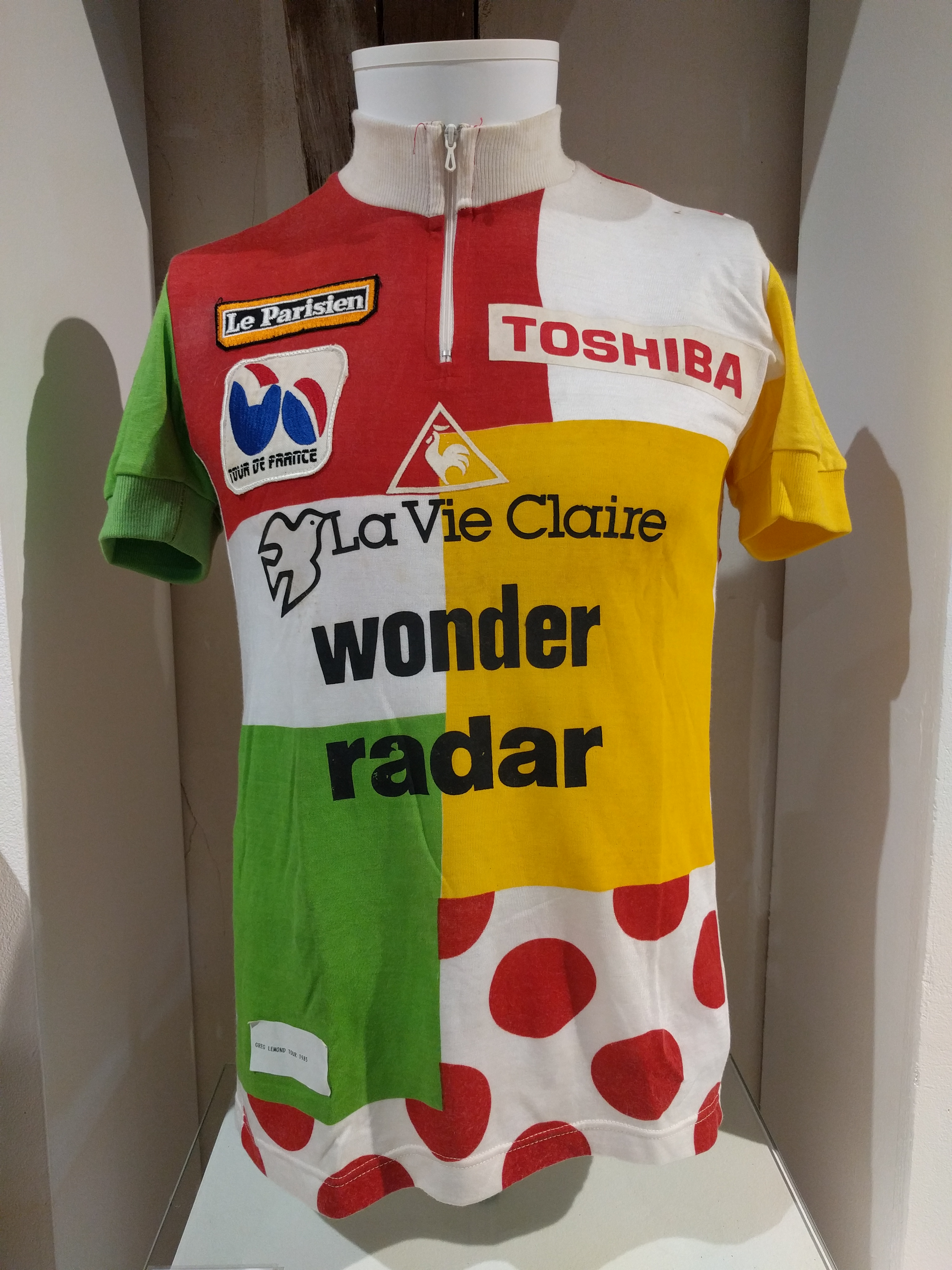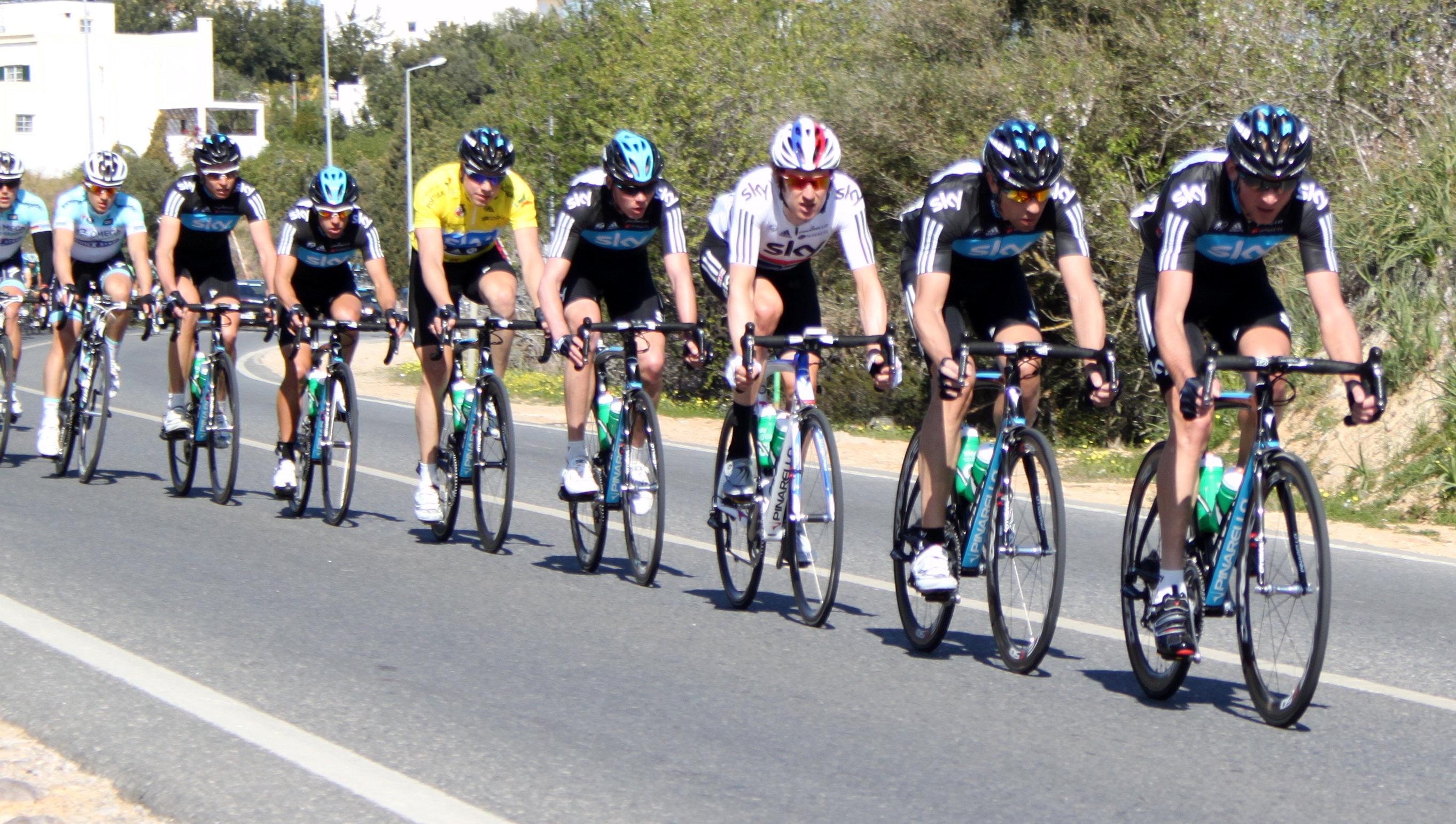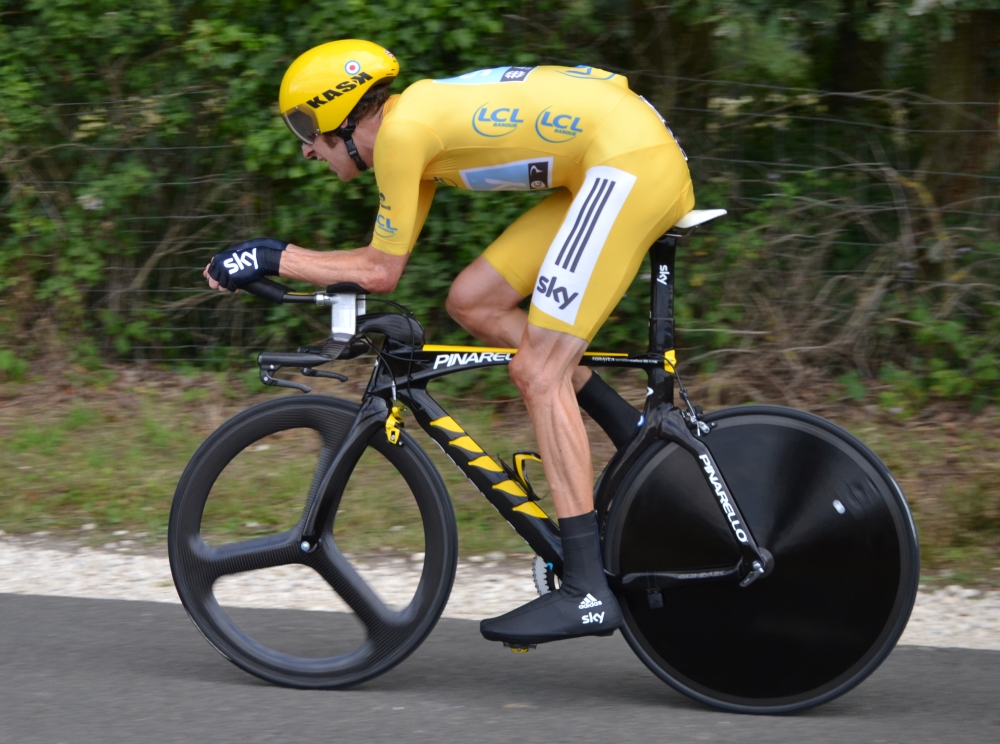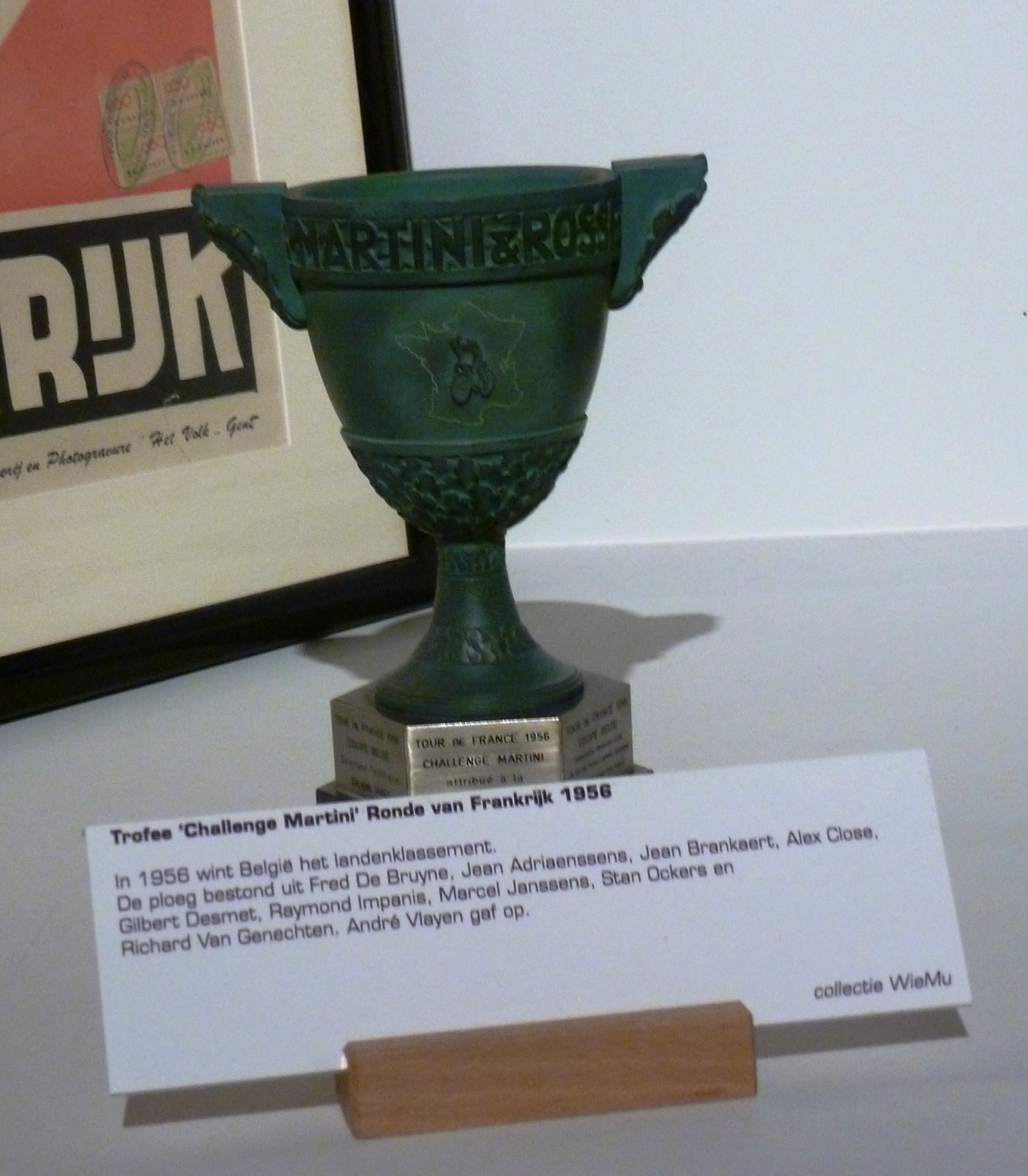|
1986 Tour De France
The 1986 Tour de France was a cycling race held in France, from 4 July to 27 July. It was the 73rd running of the Tour de France. Greg LeMond of won the race, ahead of his teammate Bernard Hinault. It was the first ever victory for a rider outside of Europe. Five-time Tour winner Hinault, who had won the year before with LeMond supporting him, had publicly pledged to ride in support of LeMond in 1986. Several attacks during the race cast doubt on the sincerity of his promise, leading to a rift between the two riders and the entire La Vie Claire team, which reached its climax on the summit of Alp d'Huez late in the race. The 1986 Tour de France is widely considered to be one of the most memorable in the history of the sport due to the battle between LeMond and Hinault. Thierry Marie () took the first race leader's yellow jersey after winning the prologue time trial. The lead then moved to Alex Stieda () after stage 1, only for Marie to recapture the lead after his team won the ... [...More Info...] [...Related Items...] OR: [Wikipedia] [Google] [Baidu] |
Greg LeMond
Gregory James LeMond (born June 26, 1961) is an American former professional road racing cyclist, entrepreneur, and anti-doping advocate. A two-time winner of the Road Race World Championship (1983 and 1989) and a three-time winner of the Tour de France (1986, 1989, and 1990). LeMond is the only American male to win the Tour de France and is considered by many to be the greatest American cyclist of all time, one of the great all-round cyclists of the modern era, and an icon of the sport's globalisation. LeMond began his professional cycling career in 1981. In 1983, he became the first American male cyclist to win the Road World Championship. LeMond won the Tour de France in 1986; he is the first non-European professional cyclist to win the men's Tour. He was accidentally shot with pellets and seriously injured while hunting in 1987. Following the shooting, he underwent two surgeries and missed the next two Tours. At the 1989 Tour, he completed an improbable comeback to win in ... [...More Info...] [...Related Items...] OR: [Wikipedia] [Google] [Baidu] |
Pedro Delgado
Pedro Delgado Robledo (; born 15 April 1960), also known as Perico (), is a Spanish former professional road bicycle racer. He won the 1988 Tour de France, as well as the Vuelta a España in 1985 and 1989. Delgado is 171 centimetres tall (5 ft 7-1/2 in) and used to weigh 64 kilograms (141 lb). He was a good climber, with an aggressive style, making cycling a spectacle, which gained him fans. On one hand, there were days when he was extremely successful attacking. On the other, he occasionally suffered from big losses of time due to mistakes or strokes of bad luck. He was also a good time-trialist until the nineties, when it became difficult for him to adapt to technical changes in the time-trial bicycles. The ending of the 1987 Tour de France and the 1985 Vuelta a España and the whole 1989 Tour are among his more memorable participations in major competitions. Delgado tested positive for the known masking agent Probenecid during the 1988 tour. The drug, which had b ... [...More Info...] [...Related Items...] OR: [Wikipedia] [Google] [Baidu] |
Jim Ochowicz
Jim Ochowicz (born December 23, 1951) is a former Olympic bicyclist and manager of UCI WorldTeam . He served as president of the USA Cycling Board of Directors from 2002 to 2006.http://www.usacycling.org/news/user/story.php?id=3512 Mark Abramson elected president of USA Cycling Board of Directors Ochowicz participated in the 1972 Summer Olympics in the 4 km team pursuit cycling event. He was inducted into the United States Bicycling Hall of Fame in 1997 as a contributor to the sport of cycling. Team manager In 1981, Ochowicz founded the successful squad, which he managed through 1995, by which time it was known as Team Motorola. In many ways Ochowicz is considered to be the father of professional cycling in the United States. While a handful of American riders rode professionally in Europe in the early 80's, including phenom Greg LeMond, it wasn't until the mid 80's that the first American team broke into the professional ranks of Europe. This was the 7-Eleven team formed ... [...More Info...] [...Related Items...] OR: [Wikipedia] [Google] [Baidu] |
Peloton
In a road bicycle race, the peloton (from French, originally meaning 'platoon') is the main group or pack of riders. Riders in a group save energy by riding close ( drafting or slipstreaming) to (particularly behind) other riders. The reduction in drag is dramatic; riding in the middle of a well-developed group, drag can be reduced to as little as 5%–10%. Exploitation of this potential energy saving leads to complex cooperative and competitive interactions between riders and teams in race tactics. The term is also used to refer to the community of professional cyclists in general. Definition More formally, a peloton is defined as "two or more cyclists riding in sufficiently close proximity to be located either in one of two basic positions: (1) behind cyclists in zones of reduced air pressure, referred to as ‘drafting’, or (2) in non-drafting positions where air pressure is highest. Cyclists in drafting zones expend less energy than in front positions." A peloton has ... [...More Info...] [...Related Items...] OR: [Wikipedia] [Google] [Baidu] |
Amaury Sport Organisation
The Amaury Sport Organisation (ASO) is part of the French media group Éditions Philippe Amaury. It organises the Tour de France and other cycling races, as well as golf, running, sailing and off-road motorsport events. The president of ASO is Jean-Etienne Amaury, son of EPA founder Philippe Amaury. Cycling The Tour de France was instituted by the newspaper '' L'Auto'' in 1903. The paper was closed after World War II because of its links with the occupying Germans and a new paper, ''L'Équipe'', took over. ''L'Équipe'' (now part of EPA) organised the Tour until the race was taken over by its parent company, ASO. Current ASO organises the following cycling events: ; UCI World Tour * Critérium du Dauphiné * Eschborn–Frankfurt * La Flèche Wallonne * Liège–Bastogne–Liège * Paris–Nice * Paris–Roubaix * Tour de France * Volta a Catalunya * Vuelta a España (alongside Unipublic) ; UCI Continental Circuits * Arctic Race of Norway * Paris–Tours * Tour du Faso * T ... [...More Info...] [...Related Items...] OR: [Wikipedia] [Google] [Baidu] |
Champs-Élysées Stage In The Tour De France
Every year since 1975, the final stage of the Tour de France has concluded on the Champs-Élysées, an emblematic street of the city of Paris. As the final stage of the most recognised bike race in the world, winning it is considered very prestigious. The stage typically starts on the outskirts of Paris, and teams agree on a truce for the opening portion of the race, with cyclists taking the opportunity to have a moment of tranquility, laughing, and celebrating the achievement of finishing the Tour de France. The rider leading the general classification - whose lead is by custom not contested on the final stage, though usually it is by that point unassailable - poses for photographs, often taking a glass of champagne on the way. The second part of the race is more hotly contested. This consists of between six and ten laps of a circuit of the Champs-Élysées, a wide partly- cobblestoned road. Riders try to break away from the peloton to secure victory, though as of 2020 such att ... [...More Info...] [...Related Items...] OR: [Wikipedia] [Google] [Baidu] |
Boulogne-Billancourt
Boulogne-Billancourt (; often colloquially called simply Boulogne, until 1924 Boulogne-sur-Seine, ) is a wealthy and prestigious Communes of France, commune in the Parisian area, located from its Kilometre zero, centre. It is a Subprefectures in France, subprefecture of the Hauts-de-Seine Departments of France, department and thus the seat of the larger arrondissement of Boulogne-Billancourt. Boulogne-Billancourt includes two large islands in the Seine: Île Saint-Germain and Île Seguin. With a population of 121,334 as of 2018, it is the most populous commune in Hauts-de-Seine and most populous suburb of Paris, as well as one of the most densely populated municipalities in Europe. Boulogne-Billancourt is one of the wealthiest regions in the Parisian area and in France. Formerly an important industrial site, it has successfully reconverted into business services and is now home to major communication companies headquartered in the Val de Seine Central business district, business ... [...More Info...] [...Related Items...] OR: [Wikipedia] [Google] [Baidu] |
Individual Time Trial
An individual time trial (ITT) is a road bicycle race in which cyclists race alone against the clock (in French: ''contre la montre'' – literally "against the watch", in Italian: ''tappa a cronometro'' "stopwatch stage"). There are also track-based time trials where riders compete in velodromes, and team time trials (TTT). ITTs are also referred to as "the race of truth", as winning depends only on each rider's strength and endurance, and not on help provided by teammates and others riding ahead and creating a slipstream. Individual time trial are usually held on flat or rolling terrain, although sometimes they are held up a mountain road (in Italian: ''cronoscalata'' "chrono climbing"). Sometimes the opening stage of a stage race is a very short individual time trial called a prologue (8 km or less for men, 4 km or less for women and juniors). Starting times are at equal intervals, usually one or two minutes apart. The starting sequence is usually based on the finishing times ... [...More Info...] [...Related Items...] OR: [Wikipedia] [Google] [Baidu] |
Grand Tour (cycling)
In road bicycle racing, a Grand Tour is one of the three major European professional cycling stage races: Giro d'Italia, Tour de France, and Vuelta a España. Collectively they are termed the ''Grand Tours'', and all three races are similar in format, being three-week races with daily stages. They have a special status in the UCI regulations: more points for the UCI World Tour are distributed in Grand Tours than in other races, and they are the only stage races allowed to last longer than 14 days. All three races have a substantial history, with the Tour de France first held in 1903, Giro d'Italia first held in 1909 and the Vuelta a España first held in 1935. The Giro is generally run in May, the Tour in July, and the Vuelta in late August and September. The Vuelta was originally held in the spring, usually late April, with a few editions held in June in the 1940s. In 1995, however, the race moved to September to avoid direct competition with the Giro d'Italia. The Tour de Fra ... [...More Info...] [...Related Items...] OR: [Wikipedia] [Google] [Baidu] |
Team Classification In The Tour De France
The team classification is a prize given in the Tour de France to the best team in the race. It has been awarded since 1930, and the calculation has changed throughout the years. There is no colored jersey for this, but the numbers on the jerseys of the members of the team with the best performance in the general classification at the end of the previous stage are against a yellow background instead of white. History In the early years of the Tour de France, cyclists entered as individuals. Although they had sponsors, they were not allowed to work as a team, because tour organiser Henri Desgrange wanted the Tour de France to be a display of individual strength. In those years, cyclists could also participate unsponsored. They were categorized under different names; 1909-1914: Isolés; 1919: Categorie B; 1920-1922: 2° Classe; 1923-1926: Touristes-Routiers; 1937: Individuels. In 1930, Henri Desgrange gave up the idea that cyclist should race individually, and changed the format ... [...More Info...] [...Related Items...] OR: [Wikipedia] [Google] [Baidu] |
Points Classification In The Tour De France
The points classification () is a secondary competition in the Tour de France, which started in 1953. Points are given for high finishes in a stage and for winning intermediate sprints, and these are recorded in a points classification. It is considered a sprinters' competition. The leader is indicated by a green jersey (french: maillot vert), which has become a metonym for the points classification competition. The system has inspired many other cycling races; the other two Grand Tours have also installed points classifications: the Vuelta a España since 1955, also using a green jersey, and the Giro d'Italia since 1966. History After scandals in the 1904 Tour de France, the rules of the 1905 Tour de France were changed: the winner was no longer determined by the time system, but with the points system. The cyclists received points, equal to their ranking in the stage, and the cyclist with the fewest points was the leader of the race. After the 1912 Tour de France, the system ... [...More Info...] [...Related Items...] OR: [Wikipedia] [Google] [Baidu] |
Mountains Classification In The Tour De France
The mountains classification is a secondary competition in the Tour de France, that started in 1933. It is given to the rider that gains the most points for reaching mountain summits first. The leader of the classification is named the King of the Mountains, and since 1975 wears the polka dot jersey (french: maillot à pois rouges), a white jersey with red polka dots. History The first Tour de France crossed no mountain passes, but several lesser cols. The first was the col des Echarmeaux (), on the opening stage from Paris to Lyon, on what is now the old road from Autun to Lyon. The stage from Lyon to Marseille included the col de la République (), also known as the col du Grand Bois, at the edge of St-Etienne. The first major climb—the Ballon d'Alsace () in the Vosges — was featured in the 1905 race. True mountains were not included until the Pyrenees in 1910. In that year the race rode, or more walked, first the col d'Aubisque and then the nearby Tourmalet. Both ... [...More Info...] [...Related Items...] OR: [Wikipedia] [Google] [Baidu] |




.jpg)



